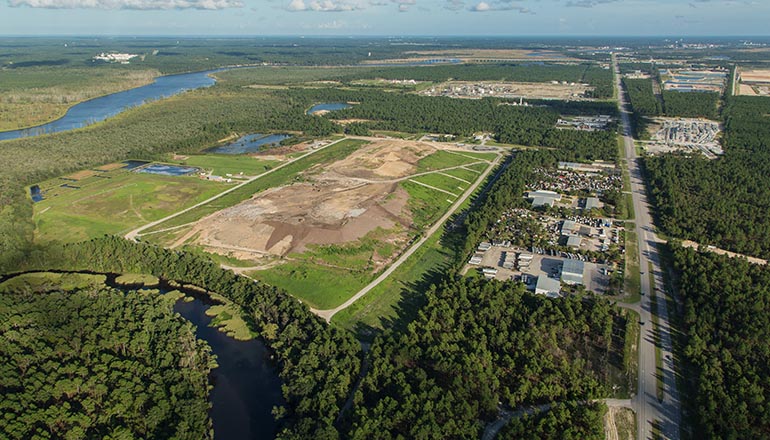
Per- and polyfluoralkyl substances (PFAS), found in a wide range of consumer and commercial products, do not break down in the environment, and landfilling, wastewater treatment and combustion do not effectively contain or destroy them, concludes a new report by the Environmental Working Group (EWG), a nonprofit that does research, education and advocacy around health and environmental issues.
The authors go on to say disposal methods can actually “return either the original PFAS or their degradation products back to the environment.” The report, which was published in Chemosphere, makes six recommendations around PFAS.
What particularly concerns Olga Naidenko, study coauthor and vice president for Science Investigations, EWG, is the unknowns. While scientists are measuring small numbers of individual PFAS compounds, such as those found in leachate, the total PFAS leaching through landfill or going through wastewater treatment plants has not been determined. Further they come from a large family and only subsets of PFAS chemicals have been measured and reported, while there are many more of potential concern. But there is no test to identify and quantify.
Naidenko punctuates the relevance of these realities around PFAS to the waste management industry.
“I and the other coauthors of this new report were previously studying PFAS in drinking water, which led to this further investigation on disposal.
In our earlier study we collected water samples. No one wants to wake up and find out PFAS is in their tap water. But treatments are expensive and once PFAS is removed, the question remains, how will they be disposed? The waste management industry did not make this problem, but someone will have to remove PFAS from the environment and water to protect public health. And eventually it will end up on the waste management side,” says Naidenko.
She and Sydney Evans, a data analyst at EWG, highlight and reflect on the six recommendations from EWG’s latest report.
1. Limiting the use of PFAS to essential applications in order to reduce industrial discharges. This recommendation will be of particular importance to the waste industry since these operators are on the receiving end, says Naidenko.
“It’s a disposal problem. But it’s also a social problem in that society at large is using a lot of products with PFAS chemicals, and there is no comprehensive waste management plan. EWG’s view is we need to start on many sides.”
She suggests that the message be sent to manufacturers that they should exclude PFAS from their products. It’s an issue that must be addressed by government and legislation and the message must also come from consumers to protect the public, she says.
2. Protecting the health of fence-line communities through strong public health policies. “There are communities around incinerators and landfills, and we want to draw attention to this issue because a lot of these sites are often in low-income communities that are already struggling with social injustices,” says Evans.
With toxic chemicals and waste disproportionally affecting people in these neighborhoods, EWG calls out the need for strong policies around monitoring and data transparency around that monitoring, as well as the need to eliminate some of these waste streams to protect people who are most at risk.
3. Capturing all liquid wastes from landfills and keeping them on site.
EWG scientists recommend that leachate is not sent to local wastewater treatment plants because PFAS get transferred and can ultimately spread pollution and potentially contaminate drinking water.
“So the recommendation that regulators are already thinking about is to store collected PFAS at the landfill and find a way to concentrate it and keep chemicals on site,” says Naidenko.
4. Monitoring PFAS contamination at and near disposal sites.
To be able to confirm that PFAS is contained in leachate and that it’s not getting to fence-line communities requires monitoring.
“We have pooled information that is a good start, but we need to know a lot more if we are trying to dive in and get control of contamination, which means knowing what PFAS is on site. And it means expanding our knowledge of the total amount of PFAS that is present,” says Evans.
EWG scientists recommend groundwater monitoring, but studies show that PFAS can travel through different areas, so they call for comprehensive media monitoring, including air monitoring to determine where these chemical compounds may be going once they reach waste disposal sites.
5. Researching PFAS incineration to address current data gaps.
EWG’s study found published research on PFAS incineration looking at air quality, but the data was all gathered from small-scale pilot studies. There was no data on commercial combustion facilities, whether sewer sludge, medical waste or others.
While the EWG report states combustion does not effectively contain or destroy PFAS, Naidenko went on to say, “The waste coming into these facilities has PFAS in it, and we don’t know [definitively] what happens during combustion.”
However, there are indicators from a few studies that there are remaining PFAS after incineration, such as one study that found PFAS in soil near an incinerator in New York.
“We don’t’ know how it got there, but data suggests PFAS is not effectively contained by incineration methods,” says Naidenko.
6. Researching advanced remediation technologies to generate new waste management solutions.
Since PFAS is not fully destroyed by treatments, and since there are indications it may not be effectively contained at combustion facilities, Evans says, “We need to look at advanced remediation technologies being developed. And we have to determine how to treat PFAS in different media such as water, soil and sewage sludge. All of these individual scenarios will have their own challenge and require specific treatment approaches. It’s complicated, so investing in advanced technology will be necessary.”
About the Author(s)
You May Also Like




